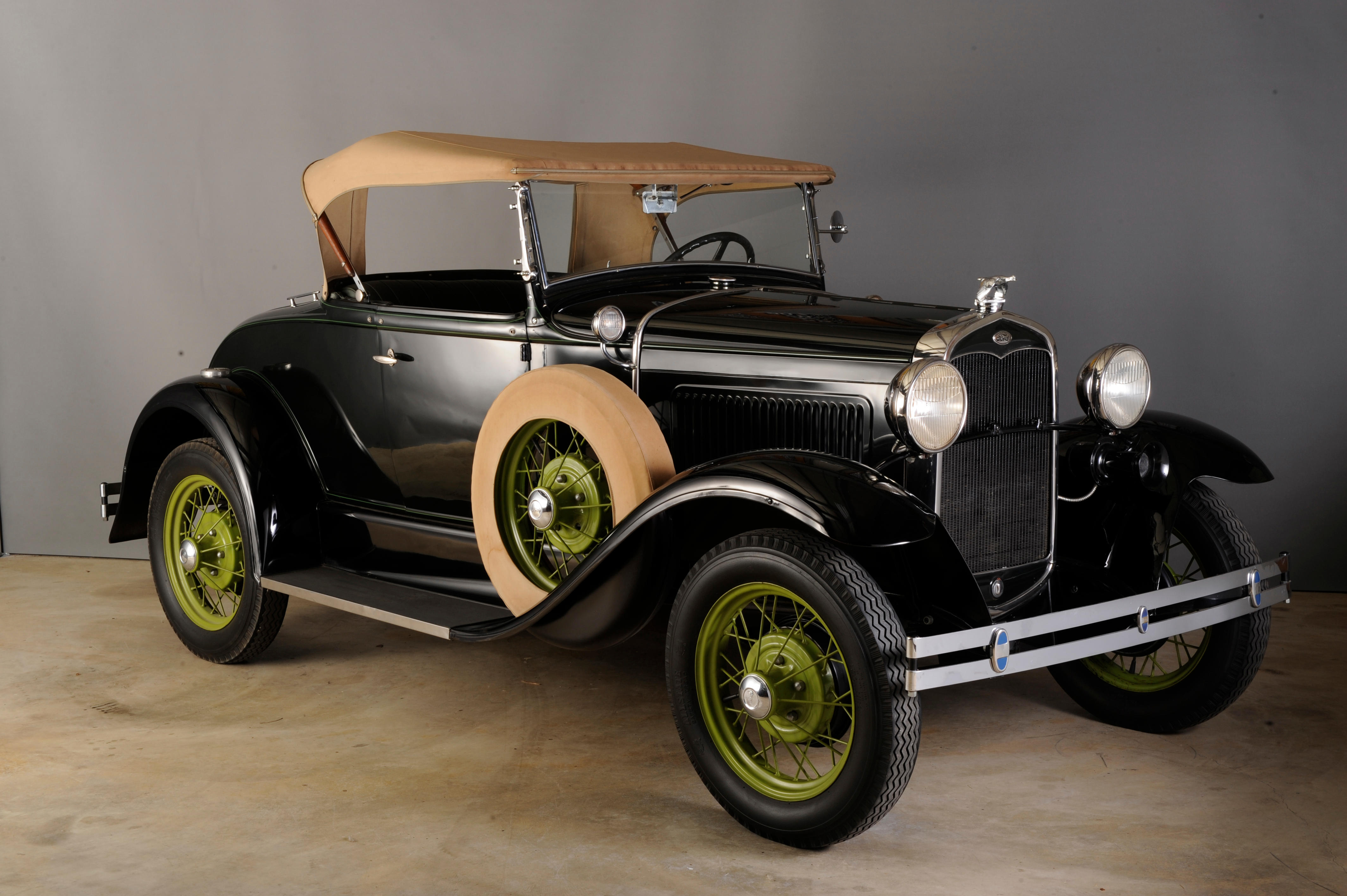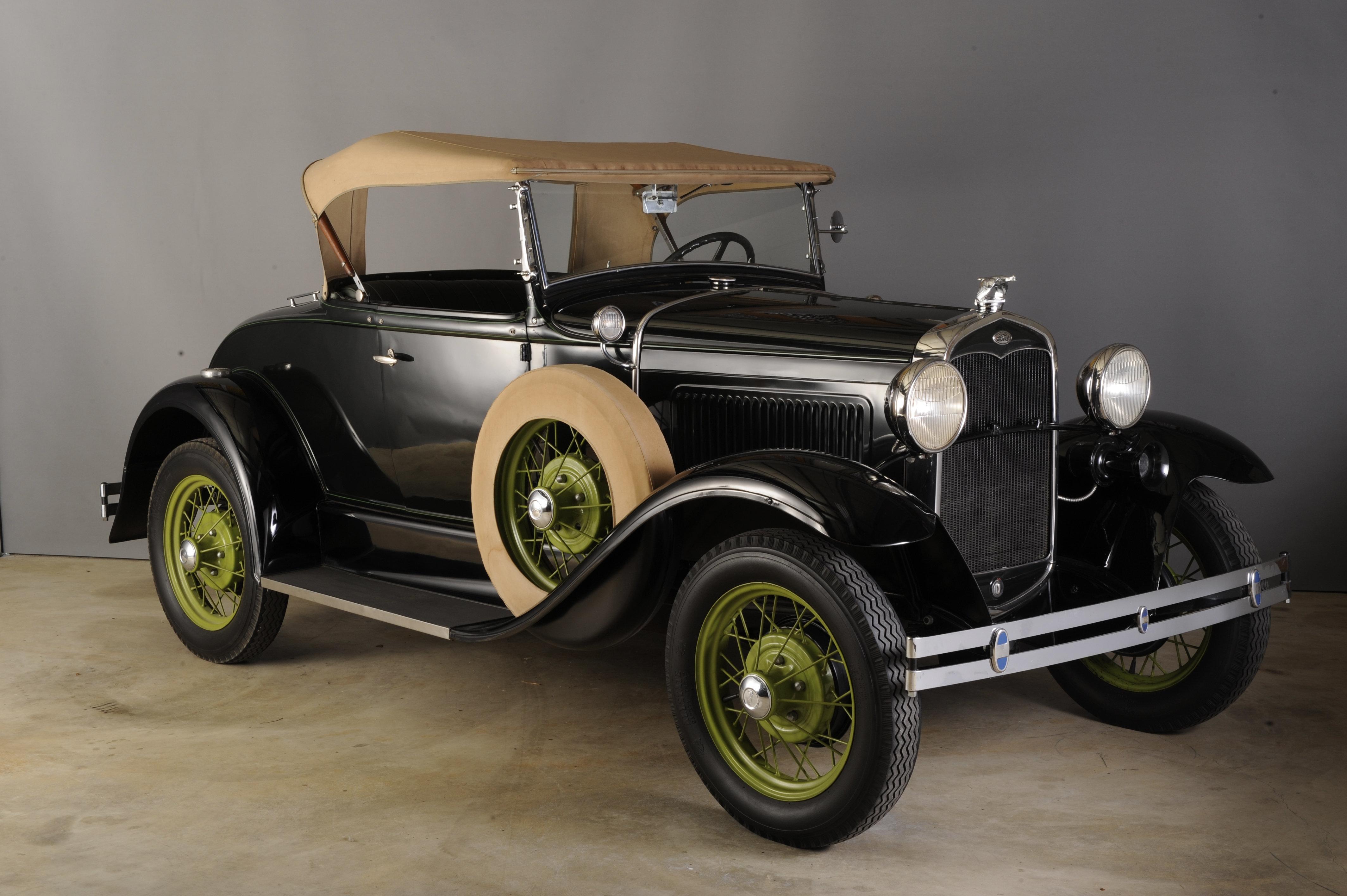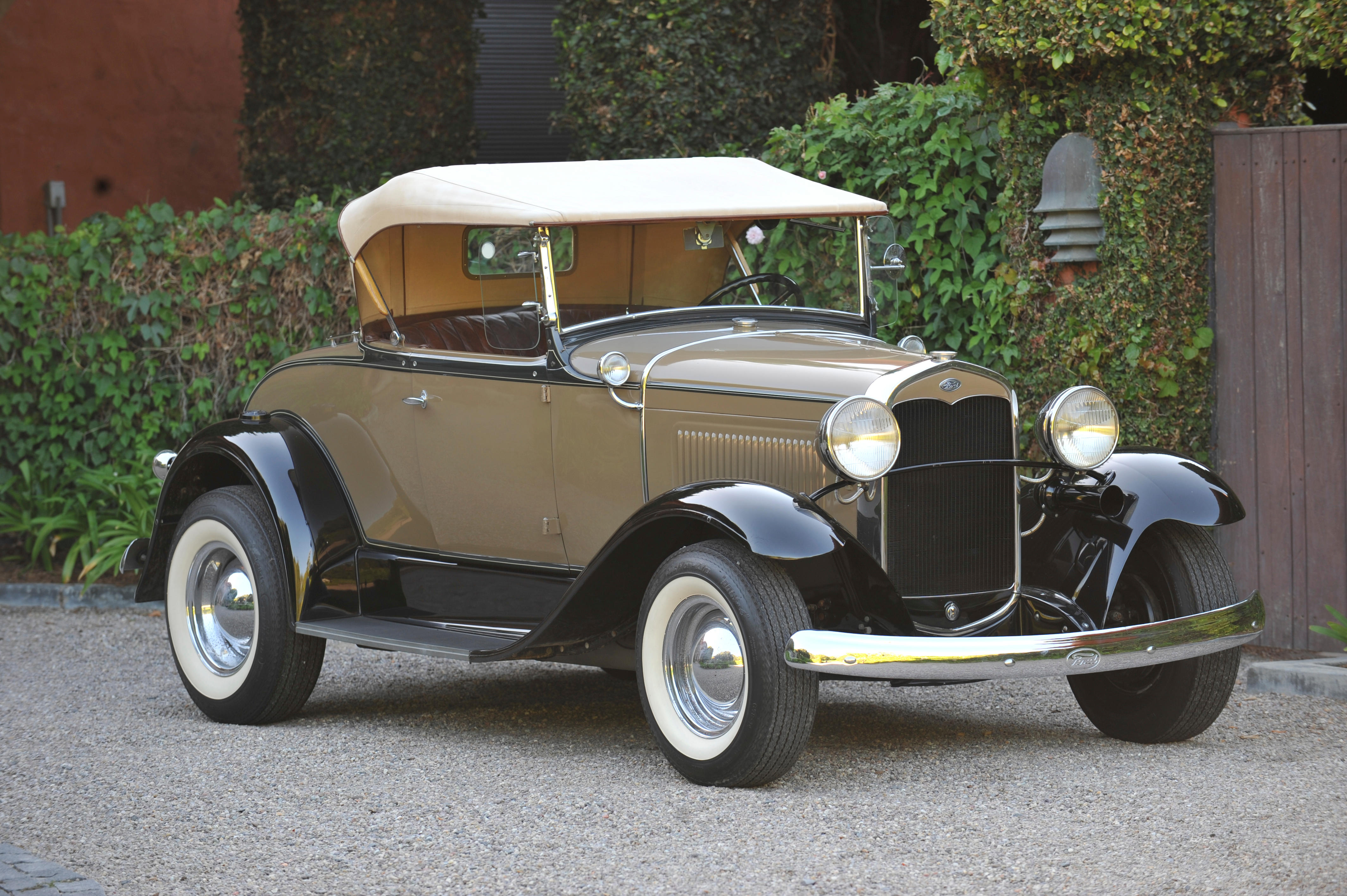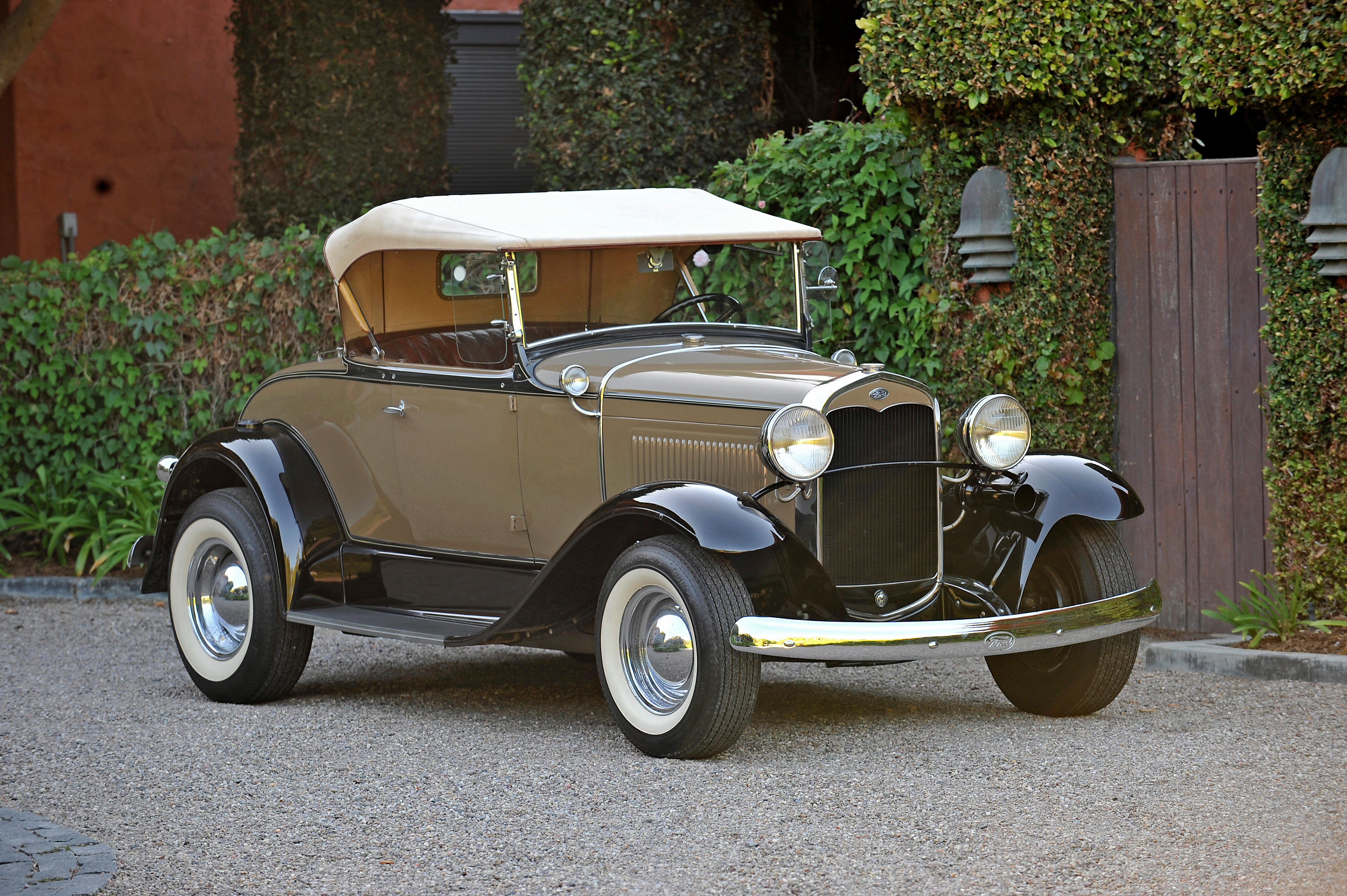On May 26, 1927, after having produced 15 million Model Ts, Henry Ford shut down his giant River Rouge complex to retool for the famous car's long-awaited replacement. More than six months would pass before a new Ford appeared. When it did, Americans crowded into showrooms to see a car so completely re-engineered that Ford named it the Model A. The new Model A's 200-cubic-inch, 4-cylinder engine was rated at 40 horsepower, double that of the Model T. A conventional three-speed manual transmission replaced the Model T's eccentric planetary-gear transmission and it included an electric starter as standard. Edsel Ford, Henry's son, directed the Model A's contemporary, clean and very pleasing appearance. The fact that they were obviously patterned on the prestigious Ford-built Lincoln of the time was certainly a plus. Another first was Ford's entrée into an area of the market for which it and other group brands would become synonymous, the 'Woodie' or Station wagon which arrived on the Model A in 1929. It was a true multi-purpose vehicle and in a day and age when re-configurable seat set ups are common place, the similarities are strikingly similar, showing just how advanced it was in concept. At a push it could accommodate 8 persons and their baggage on the fold down rear deck, or alternatively the individual pair of second row seats and rear bench could be folded forward and lifted out leaving a substantial flat deck area. As with a 'T' the color palette was limited to a single color, 'Manila Brown,' while fenders, wheels and most trim pieces were painted black. Over time dealers and subsequent owners frequently upgraded the appearance by adding the passenger car's chromed radiator shell. The well-presented Station Wagon that we offer comes to sale from a prominent North East collection where it has resided for most of the last decade having been acquired by this collector from a family friend. The Wagon was restored in its previous ownership and as a result of limited use since it retains an excellent finish throughout. The car's wood is immaculate, the interior clean and unworn for the most part, with the only noted age being a couple of small tears to the back of one of the rear single seats. In keeping with policies in the collection in which it resides the car is regularly started and run, which it did easily when photographed. At the time of cataloguing side curtains were not located and may not be with the car. Of the 4.3 million Model A's built, Station Wagons represented a miniscule fraction of production and their survival rate has been modest, with the result that they are less frequently seen on the market than their successors. From hood ornament to rear view mirror clock, this benchmark example of the model has all its period details and can be highly recommended for sociable summer motoring fun!
On May 26, 1927, after having produced 15 million Model Ts, Henry Ford shut down his giant River Rouge complex to retool for the famous car's long-awaited replacement. More than six months would pass before a new Ford appeared. When it did, Americans crowded into showrooms to see a car so completely re-engineered that Ford named it the Model A. The new Model A's 200-cubic-inch, 4-cylinder engine was rated at 40 horsepower, double that of the Model T. A conventional three-speed manual transmission replaced the Model T's eccentric planetary-gear transmission and it included an electric starter as standard. Edsel Ford, Henry's son, directed the Model A's contemporary, clean and very pleasing appearance. The fact that they were obviously patterned on the prestigious Ford-built Lincoln of the time was certainly a plus. Another first was Ford's entrée into an area of the market for which it and other group brands would become synonymous, the 'Woodie' or Station wagon which arrived on the Model A in 1929. It was a true multi-purpose vehicle and in a day and age when re-configurable seat set ups are common place, the similarities are strikingly similar, showing just how advanced it was in concept. At a push it could accommodate 8 persons and their baggage on the fold down rear deck, or alternatively the individual pair of second row seats and rear bench could be folded forward and lifted out leaving a substantial flat deck area. As with a 'T' the color palette was limited to a single color, 'Manila Brown,' while fenders, wheels and most trim pieces were painted black. Over time dealers and subsequent owners frequently upgraded the appearance by adding the passenger car's chromed radiator shell. The well-presented Station Wagon that we offer comes to sale from a prominent North East collection where it has resided for most of the last decade having been acquired by this collector from a family friend. The Wagon was restored in its previous ownership and as a result of limited use since it retains an excellent finish throughout. The car's wood is immaculate, the interior clean and unworn for the most part, with the only noted age being a couple of small tears to the back of one of the rear single seats. In keeping with policies in the collection in which it resides the car is regularly started and run, which it did easily when photographed. At the time of cataloguing side curtains were not located and may not be with the car. Of the 4.3 million Model A's built, Station Wagons represented a miniscule fraction of production and their survival rate has been modest, with the result that they are less frequently seen on the market than their successors. From hood ornament to rear view mirror clock, this benchmark example of the model has all its period details and can be highly recommended for sociable summer motoring fun!















Testen Sie LotSearch und seine Premium-Features 7 Tage - ohne Kosten!
Lassen Sie sich automatisch über neue Objekte in kommenden Auktionen benachrichtigen.
Suchauftrag anlegen